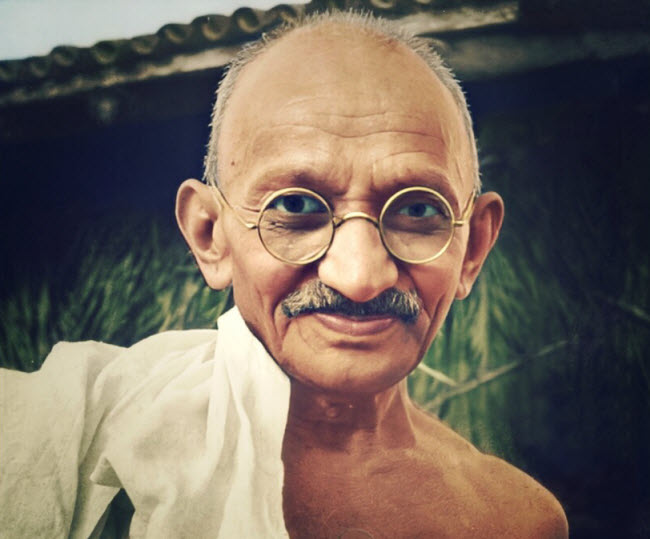Mahatma Gandhi, an Indian political leader, and prominent human rights activist, is celebrated as one of the greatest spiritual leaders of the 20th century. Revered by his fellow Indians as “Mahatma,” meaning “Great Soul,” Gandhi is regarded as the father of the nation for his relentless efforts to promote peace between Muslims and Hindus, leading the national movement advocating for the rights of his people and demanding independence from British colonial rule through nonviolent methods such as civil disobedience and boycotting British institutions. His simple lifestyle, characterized by asceticism, fasting, and prayers, did not hinder the widespread dissemination of his ideas beyond India, inspiring other activists and leaders like Martin Luther King Jr. and Nelson Mandela.
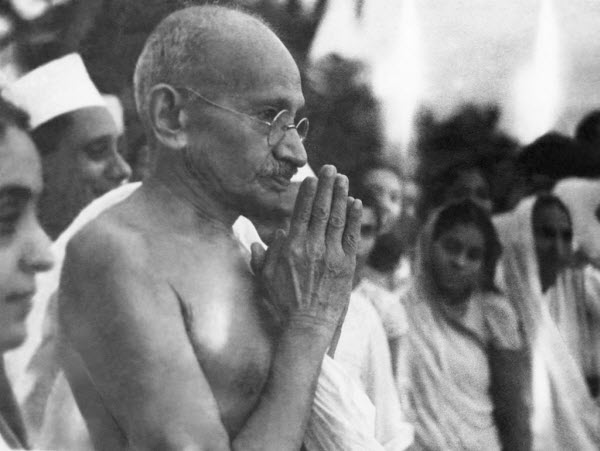
Early Life and Education
Mahatma Gandhi, born Mohandas Karamchand Gandhi on October 2, 1869, in Porbandar, Gujarat, India, was part of the British Empire at that time. His father, Karamchand Gandhi, held the position of Prime Minister in Porbandar and other Western Indian states. His mother, Putlibai, was deeply religious and known for her fasting. As a child, Gandhi was notably shy and fearful, to the extent that he would avoid sleeping in the dark well into his later years. During his adolescence, he rebelled against his religious teachings by smoking, eating meat, and stealing money from servants.
Despite Gandhi’s interest in becoming a doctor, his father aspired for him to become a prominent political figure and minister. Consequently, Gandhi was guided towards a career in law. In 1888, at the age of 18, he sailed to London to study law. He struggled to adjust to the Western cultural differences in customs and traditions. Upon returning to India in 1891, he learned that his mother had passed away just weeks before his arrival.
Upon his return, Gandhi established a legal practice in Bombay but struggled to succeed. He soon accepted a position with an Indian company that sent him to its office in South Africa, where he, along with his wife Kasturba and their children, would spend nearly 20 years.
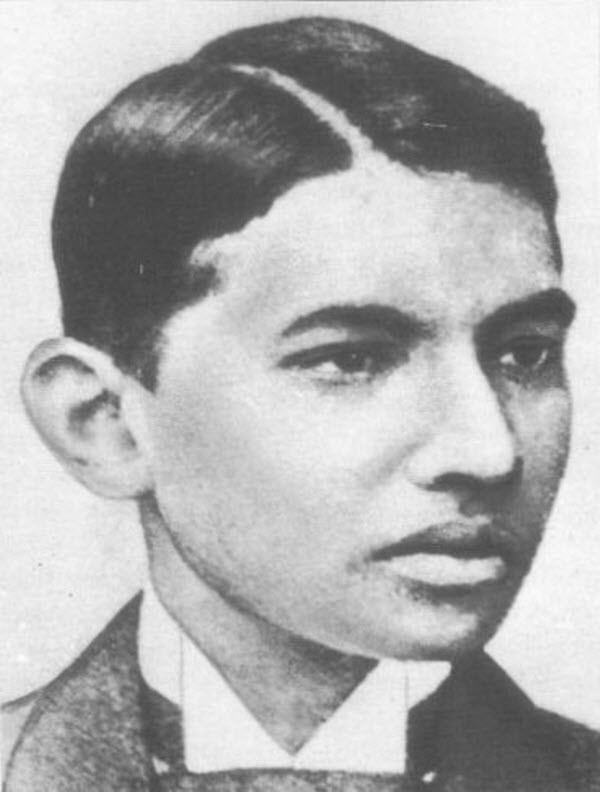
Gandhi in South Africa
Gandhi’s contract in South Africa was initially for just one year, starting in 1893, but upon arrival in Durban, he was horrified by the racial discrimination and segregation faced by Indian immigrants at the hands of British authorities and the Boer government. During his first appearance in a Durban courtroom, he was asked to remove his turban and, refusing to comply, left the court, where he was ridiculed and labeled an “unwelcome visitor.”
On June 7, 1893, while traveling by train to Pretoria, Gandhi was thrown off a first-class carriage, despite holding a valid ticket, by a white man who objected to his presence. This incident had a profound impact on him, leading him to commit his life to fighting the deep-seated prejudice of racial discrimination. That night, he vowed to combat this disease and endure the suffering that came with it. Thus, the young and humble Gandhi transformed into a relentless advocate for civil rights, founding the Natal Indian Congress in 1894 to combat discrimination.
As Gandhi prepared to return to India at the end of his contract, he learned of a bill in the Natal legislature that would disenfranchise Indians. Convinced by his fellow Indian immigrants to stay and lead the fight against the legislation, Gandhi agreed, despite knowing he could not prevent the bill’s passage but aimed to draw international attention to the injustice.
After a brief return to India in late 1896 and early 1897, Gandhi went back to South Africa with his family. When the Boer War broke out, he formed an all-Indian ambulance corps of 1,100 volunteers to support the British cause, arguing that if Indians were to gain full citizenship rights in the British Empire, they should also shoulder its responsibilities. In 1906, Gandhi organized his first mass campaign of civil disobedience, termed “Satyagraha,” in response to new restrictions imposed by the Transvaal government in South Africa on Indian rights, including the refusal to recognize Hindu marriages. After years of protests and imprisonment for Gandhi and hundreds of Indians, a compromise was reached between Gandhi and General Jan Smuts, which included recognizing Hindu marriages and abolishing the poll tax for Indians.
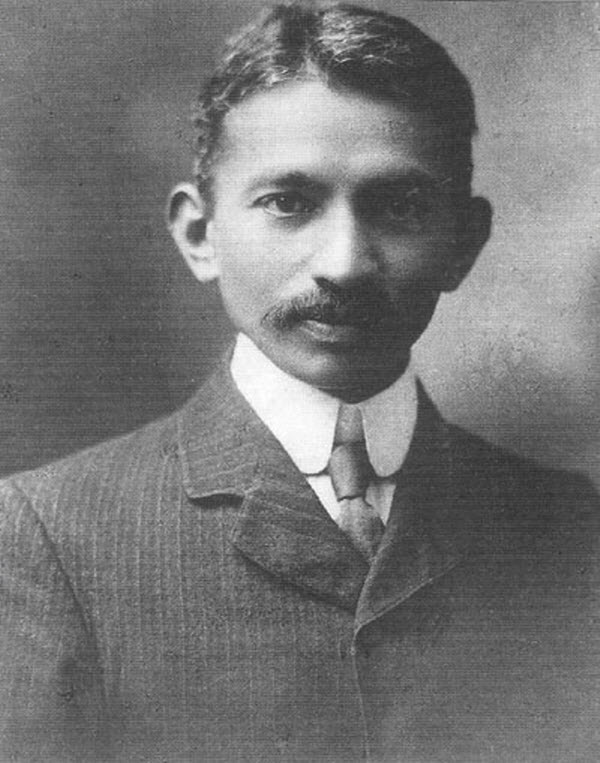
Return to India
In 1914, Gandhi returned to India from South Africa. General Smuts remarked, “The saint has left our shores, and I sincerely hope it is for good.” In 1915, Gandhi established an ashram in Ahmedabad, a religious retreat open to all castes. He led a life of austerity, wearing a simple loincloth and shawl, dedicating most of his time to prayer, fasting, and meditation. He came to be known as “Mahatma,” meaning “Great Soul.”
Opposition to British Rule in India
In 1919, British control over India continued, and Gandhi’s political spirit was reignited by the repressive Rowlatt Act, which allowed the British authorities to imprison suspected dissenters without trial. In response, Gandhi called for a campaign of nonviolent resistance and strikes. However, violence erupted on April 13, 1919, during the Amritsar Massacre, where British troops led by Brigadier General Reginald Dyer fired on unarmed protesters, killing around 400 people.
Gandhi could no longer pledge allegiance to the British government and returned medals he had received for his military service in South Africa. He opposed the compulsory recruitment of Indians into the British army during World War I and became a prominent figure in the Indian self-rule movement, calling for comprehensive boycotts and civil disobedience. He urged government officials to resign, students to leave government schools, soldiers to quit their jobs, and citizens to stop paying taxes and buying British goods, especially textiles. Gandhi began spinning his own cloth, symbolizing India’s quest for independence and self-reliance.
In 1922, Gandhi was arrested and convicted on three charges of sedition. Despite a six-year prison sentence, he was released in February 1924 following an appendectomy. During his imprisonment, he discovered that communal relations between Hindus and Muslims had deteriorated due to violence. To promote unity, he undertook a three-week fast in the fall of 1924 and stayed away from active politics for most of the late 1920s.
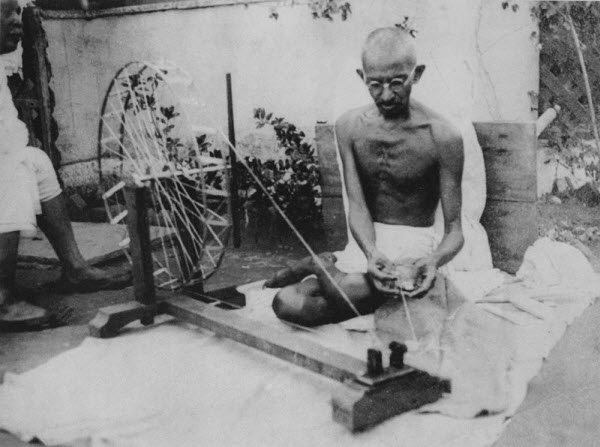
Gandhi and the Salt March
Gandhi returned to active politics in 1930 to protest the British salt tax, which prohibited Indians from collecting or selling salt and imposed heavy taxes that impoverished the population. He planned a new Satyagraha campaign by organizing the Salt March, a symbolic 390-kilometer march to the Arabian Sea to gather salt.
On March 12, 1930, Gandhi set out from his ashram in Sabarmati, wearing a white shawl and sandals, carrying a walking stick, accompanied by a few dozen followers. By the time he reached the coastal town of Dandi after 24 days, the number of protesters had swelled, and he began breaking the law by producing salt from evaporated seawater.
The Salt March ignited similar protests and widespread civil disobedience across India. About 60,000 Indians were imprisoned for violating salt laws, including Gandhi, who was arrested in May 1930. Nevertheless, his protest against the salt laws earned him global recognition, and he was named Time magazine’s “Man of the Year” for 1930.
In January 1931, Gandhi was released from prison, and after two months, he reached an agreement with Lord Irwin to end the protests in exchange for concessions, including the release of thousands of political prisoners. Although the agreement largely maintained the salt laws, it allowed those living on the coast to harvest salt from the sea.
Hopeful that this agreement would be a stepping stone toward self-rule, Gandhi attended the Round Table Conference in London in August 1931 as the sole representative of the Indian National Congress. However, the conference yielded no significant results.
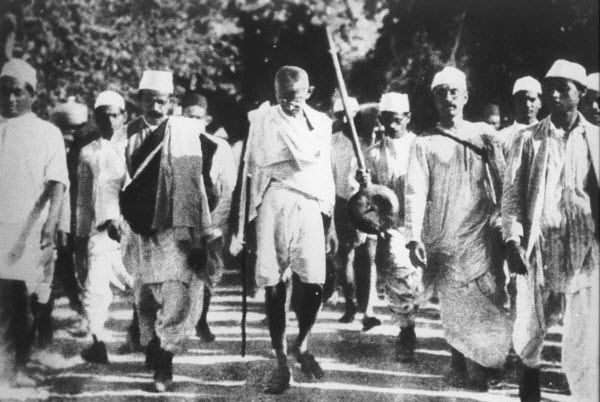
Gandhi’s Protest Against Racial Segregation
Upon returning to India in January 1932, Gandhi found himself imprisoned again during a crackdown by the new Viceroy of India, Lord Willingdon, after he began a six-day fast protesting the British decision to separate “untouchables,” those at the lowest rung of the caste system, into separate electoral constituencies. His protests led to modifications of the proposal, and after his release, Gandhi withdrew from the Indian National Congress in 1934, passing leadership to his protege Jawaharlal Nehru, and focused on education, poverty, and rural issues.
Indian Independence from the British Empire
In 1942, as Britain found itself mired in World War II, Gandhi launched the “Quit India” movement, calling for immediate British withdrawal from India. In August 1942, he and other Congress leaders were arrested and detained in the Aga Khan Palace in Pune. During this period, Winston Churchill declared in Parliament that he would not oversee the dismantling of the British Empire. With Gandhi’s health deteriorating, he was released after 19 months. Following Churchill’s defeat in the 1945 British general election, negotiations for Indian independence began with the Indian National Congress and the Muslim League, led by Muhammad Ali Jinnah. Despite his active role in the negotiations, Gandhi was unable to realize his vision of a unified India, as the final plan for partitioning the Indian subcontinent on religious grounds resulted in the creation of two independent states: India, with a Hindu majority, and Pakistan, with a Muslim majority.
In 1947, violence erupted between Hindus and Muslims even before independence was officially implemented, leading to widespread bloodshed. Gandhi traveled through riot-torn areas, calling for peace and fasting to halt the violence. However, some Hindus increasingly viewed Gandhi as a traitor to his religion for his sympathy towards Muslims.
Assassination of Mahatma Gandhi
On January 30, 1948, Gandhi, aged 78, was assassinated during his prayer meeting by the Hindu extremist Nathuram Godse, who was angered by Gandhi’s tolerance toward Muslims. Godse approached Gandhi during the prayer meeting, pulled out a semi-automatic pistol, and shot him three times at close range, killing Gandhi instantly. Godse was arrested and tried, receiving a death sentence, which was carried out in November 1949. Other conspirators were sentenced to life imprisonment.
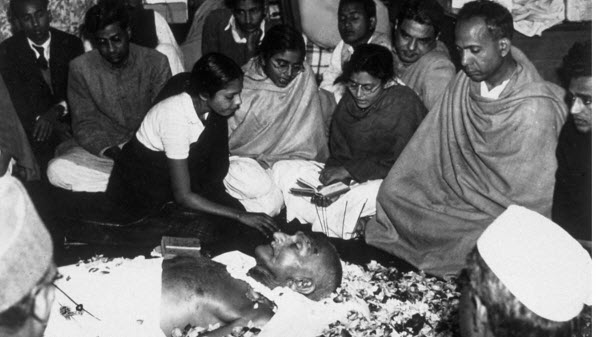
Highlights of His Life
Gandhi was raised worshiping the Hindu god Vishnu and followed Jainism, a strict moral religion embracing nonviolence, fasting, meditation, and vegetarianism. His commitment deepened during his early years in London, adopting a meat-free diet, joining the London Vegetarian Society, and studying various sacred texts to understand world religions. In South Africa, he continued exploring other religions, immersing himself in Hindu spiritual texts and adopting a life of simplicity, austerity, fasting, and renunciation of material comforts.
Gandhi married Kasturba Makhanji at the age of 13 in an arranged marriage. She passed away in his arms in February 1944, at the age of 74, leaving him with four children, two of whom were born during their time in South Africa.
